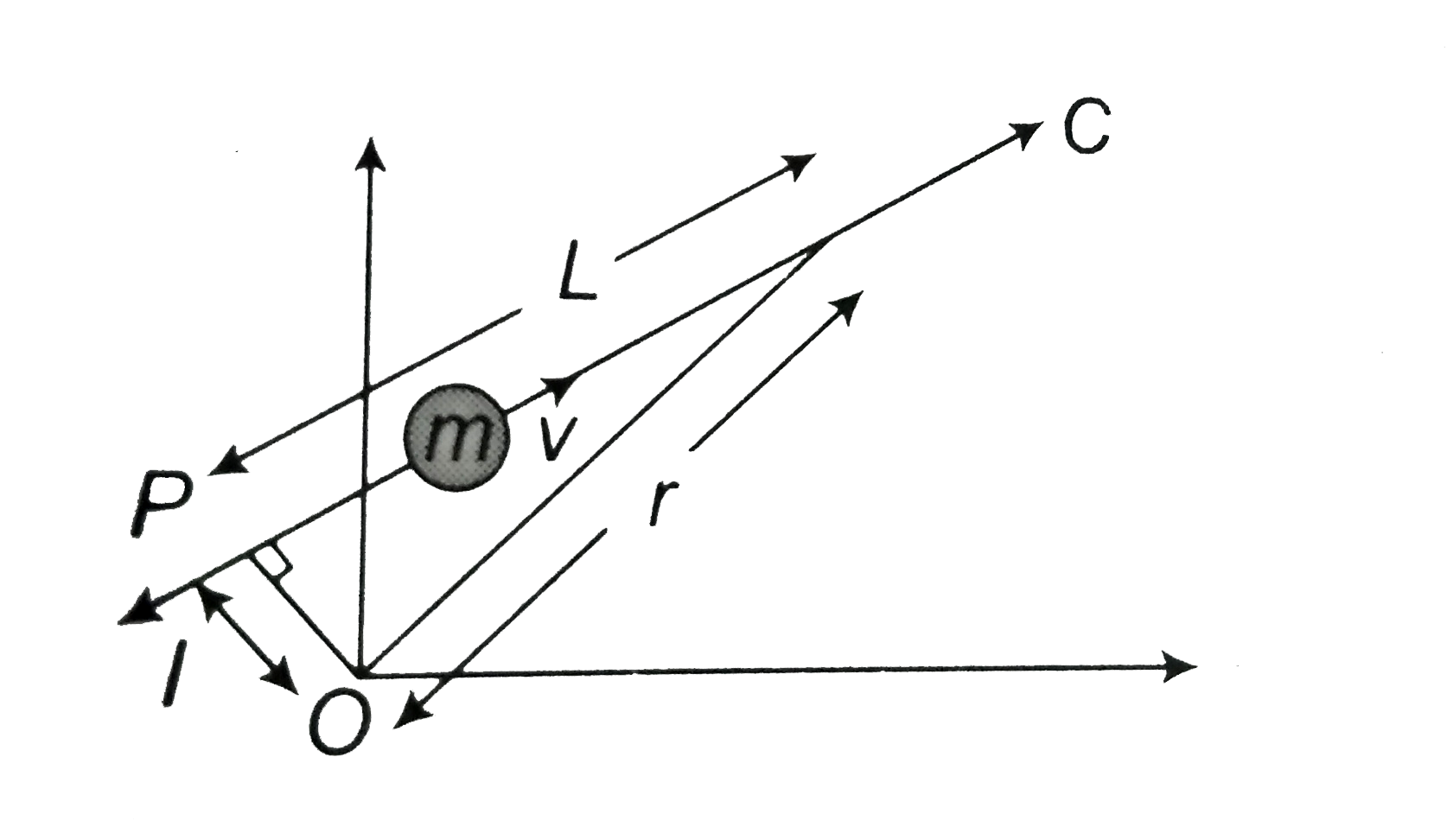A particle of mass moving eastward with a velocity collides with another particle of same mass moving northwards with the same speed . The two particles coalesce and the new particle moves in NE direction. Calculate magnitude and direction of velocity of new particle.
North - East
South - West
North - West
North - East
The correct Answer is:D
To solve the problem, we will apply the principle of conservation of momentum. Let's break down the solution step by step.
Step 1: Understand the initial conditions
We have two particles, both of mass m:
- Particle 1 is moving eastward with velocity V.
- Particle 2 is moving northward with velocity V.
Step 2: Set up the momentum equations
The momentum of each particle can be expressed as:
- Momentum of Particle 1 (eastward): →p1=mV^i
- Momentum of Particle 2 (northward): →p2=mV^j
Step 3: Calculate the total initial momentum
The total initial momentum →Pinitial before the collision is the vector sum of the momenta of both particles:
→Pinitial=→p1+→p2=mV^i+mV^j
Step 4: Apply conservation of momentum
Since the two particles coalesce after the collision, the total momentum before the collision equals the total momentum after the collision:
→Pinitial=→Pfinal
Let →Vfinal be the velocity of the new particle after the collision. The total momentum after the collision can be expressed as:
→Pfinal=(2m)→Vfinal
Thus, we have:
mV^i+mV^j=2m→Vfinal
Step 5: Simplify the equation
Dividing through by m:
V^i+V^j=2→Vfinal
Now, divide both sides by 2:
→Vfinal=V2^i+V2^j
Step 6: Calculate the magnitude of the final velocity
To find the magnitude of →Vfinal:
|→Vfinal|=√(V2)2+(V2)2
|→Vfinal|=√V24+V24=√2V24=√V22=V√2
Step 7: Determine the direction of the final velocity
The direction of →Vfinal can be found from the components:
- The x-component is V2 (eastward).
- The y-component is V2 (northward).
This means the final velocity vector points in the northeast direction (45 degrees from both axes).
Final Answer
The magnitude of the velocity of the new particle is V√2 and it moves in the northeast direction.
---
We have two particles, both of mass m:
- Particle 1 is moving eastward with velocity V.
- Particle 2 is moving northward with velocity V.
The momentum of each particle can be expressed as:
- Momentum of Particle 1 (eastward): →p1=mV^i
- Momentum of Particle 2 (northward): →p2=mV^j
The total initial momentum →Pinitial before the collision is the vector sum of the momenta of both particles:
→Pinitial=→p1+→p2=mV^i+mV^j
Since the two particles coalesce after the collision, the total momentum before the collision equals the total momentum after the collision:
→Pinitial=→Pfinal
Let →Vfinal be the velocity of the new particle after the collision. The total momentum after the collision can be expressed as:
→Pfinal=(2m)→Vfinal
Thus, we have:
mV^i+mV^j=2m→Vfinal
Dividing through by m:
V^i+V^j=2→Vfinal
Now, divide both sides by 2:
→Vfinal=V2^i+V2^j
To find the magnitude of →Vfinal:
|→Vfinal|=√(V2)2+(V2)2
|→Vfinal|=√V24+V24=√2V24=√V22=V√2
The direction of →Vfinal can be found from the components:
- The x-component is V2 (eastward).
- The y-component is V2 (northward).
The magnitude of the velocity of the new particle is V√2 and it moves in the northeast direction.
Topper's Solved these Questions
- WORK, ENERGY AND POWERBOOK - AAKASH INSTITUTE ENGLISHCHAPTER - WORK, ENERGY AND POWEREXERCISE - Assignment (SECTION - B)
35 Videos
- WORK, ENERGY AND POWERBOOK - AAKASH INSTITUTE ENGLISHCHAPTER - WORK, ENERGY AND POWEREXERCISE - Assignment (SECTION - C)
80 Videos
- WORK, ENERGY AND POWERBOOK - AAKASH INSTITUTE ENGLISHCHAPTER - WORK, ENERGY AND POWEREXERCISE - EXERCISE
37 Videos
- WAVESBOOK - AAKASH INSTITUTE ENGLISHCHAPTER - WAVESEXERCISE - ASSIGNMENT ( SECTION-D ( Assertion - Reason Type Questions ))
12 Videos
Similar Questions
A particle of mass m moving towards west with speed v collides with another particle of mass m movies towards south. If two particles st ich t o each other the speed of the new particle of mass 2 m will be
View SolutionA particle of mass m moving with speed V collides elastically with another particle of mass 2m. Find speed of smaller mass after head on collision
View SolutionA particle of mass 2m moving with velocity v strikes a stationary particle of mass 3m and sticks to it . The speed of the system will be
View SolutionA particle of mass 2 kg moving with a speed of 6 m/s collides elastically with another particle of mass 4 kg travelling in same direction with a speed of 2m/s. The maximum possible deflection of the 2 kg particle is
View SolutionA particle of mass 2kg moving with a velocity 5ˆim/s collides head-on with another particle of mass 3kg moving with a velocity −2ˆim/s. After the collision the first particle has speed of 1.6m/s in negative x-direction, Find
(a) velocity of the centre of mass after the collision,
(b) velocity of the second particle after the collision.
(c) coefficient of restitution.
View SolutionA particle of mass 2kg moving with a velocity 5ˆim/s collides head-on with another particle of mass 3kg moving with a velocity −2ˆim/s. After the collision the first particle has speed of 1.6m/s in negative x-direction, Find
(a) velocity of the centre of mass after the collision,
(b) velocity of the second particle after the collision.
(c) coefficient of restitution.
View SolutionA particle of mass m moving with a velocity (3ˆi+2ˆj)ms−1 collides with another body of mass M and finally moves with velocity (−2ˆi+ˆj)ms−1. Then during the collision
View SolutionA particle of mass m with an initial velocity uˆi+2uˆj collides with a particle of mass 3m at rest. After collision, the two particles stick together and the combined particle moves with a velocity vˆi+v'ˆj. Which of the following is incorrect?
View SolutionA particle of mass m travelling with velocity v and kinetic energy E collides elastically to another particle of mass nm, at rest. What is the fraction of total energy retained by the particle of mass m?
View SolutionA particle of mass m moves along line PC with velocity v as shown. What is the angular momentum of the particle about O?

View Solution
